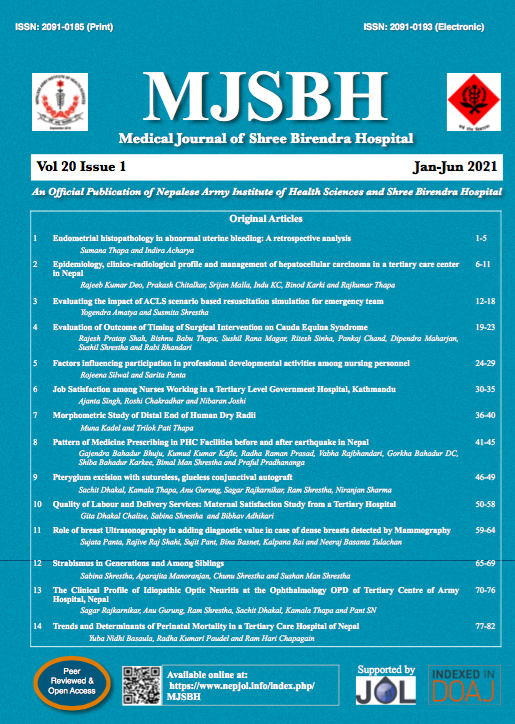Epidemiology, Clinico-radiological Profile and Management of Hepatocellular Carcinoma in a Tertiary Care Center in Nepal
Keywords:
Hepatitis B; Hepatocellular carcinoma; SorafenibAbstract
Introduction: Hepatocellular Carcinoma (HCC) is a common malignancy of gastrointestinal tract presenting in clinical practice. The common etiologies are hepatitis B virus (HBV), hepatitis C virus (HCV) and alcohol consumption. Treatment of HCC is multimodality based on Barcelona Clinic Liver Cancer (BCLC) staging system. The aim of the article is to study the demographic, clinico-radiological profile and treatment patterns of HCC patients.
Methods: This is a retrospective cross sectional study of patients diagnosed as HCC at Shree Birendra Hospital, Chhauni, Kathmandu, Nepal from April 2017 to March 2020. The study was approved by Institutional Review Committee. Data were collected for demography, clinical feature, histology, HBsAg status, serum AFP values, radiological findings and treatment details from hospital record. Data were analysed using Excel 2010 and SPSS v 21.
Results: Total of 36 patients diagnosed with HCC were included for analysis. There was a male predominance (72.22%) and the mean age was 66.75 ± 12.02 years. Pain abdomen and jaundice were present in 63.89% and 38.89% respectively at presentation and features of chronic liver disease (CLD) were evident in 83.33%. HBsAg was present in 44.44% of HCC. Location of tumour was primarily in right lobe (80.56%) and size of lesion varied greatly. Tissue diagnosis was obtained in 52.78% patients. Chemotherapy option was limited to Sorafenib.
Conclusions: HCC is more prevalent in older males. The common modes of presentation were pain abdomen and jaundice. Most of the HCC had underlying CLD and were advanced. Sorafenib was the mainstay of treatment in advanced HCC.
Downloads
Downloads
Published
How to Cite
Issue
Section
License
This license enables reusers to distribute, remix, adapt, and build upon the material in any medium or format for noncommercial purposes only, and only so long as attribution is given to the creator.




